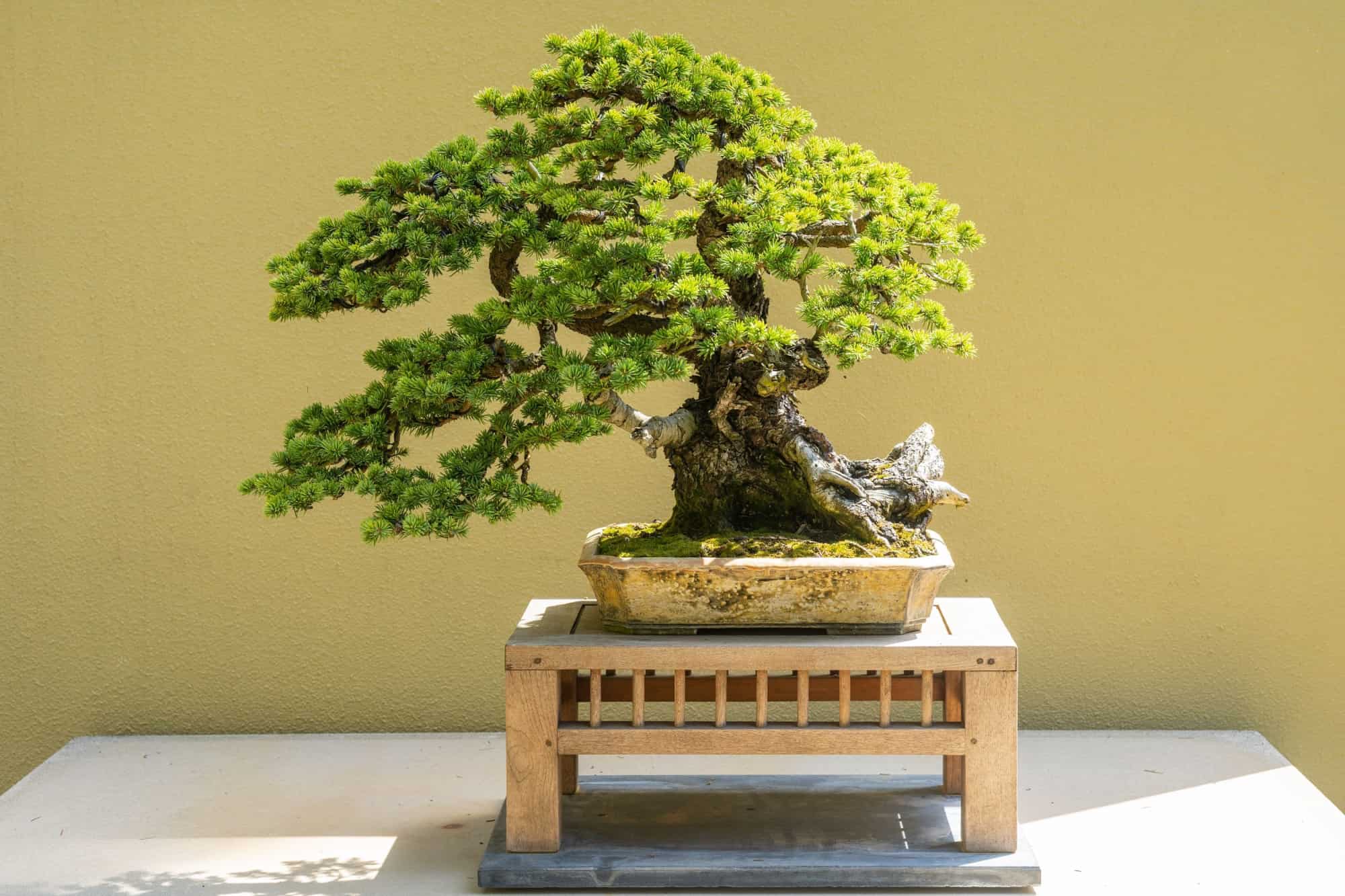While it can be difficult to train a spruce Bonsai tree, these specimens are beautiful no matter which way you style them. Members of the Picea genus, spruce trees are evergreen and coniferous, preferring to grow outdoors in a Bonsai tree format. But how can you best care for your spruce Bonsai tree, and what might some of the most common types be for Bonsai cultivation?
With natural whorls and a rugged design, spruce Bonsai trees are easy to craft in miniature landscapes. Here’s how to take care of a spruce Bonsai tree, from its basic care needs to some potential struggles you may have with your very own specimen! Let’s get started.
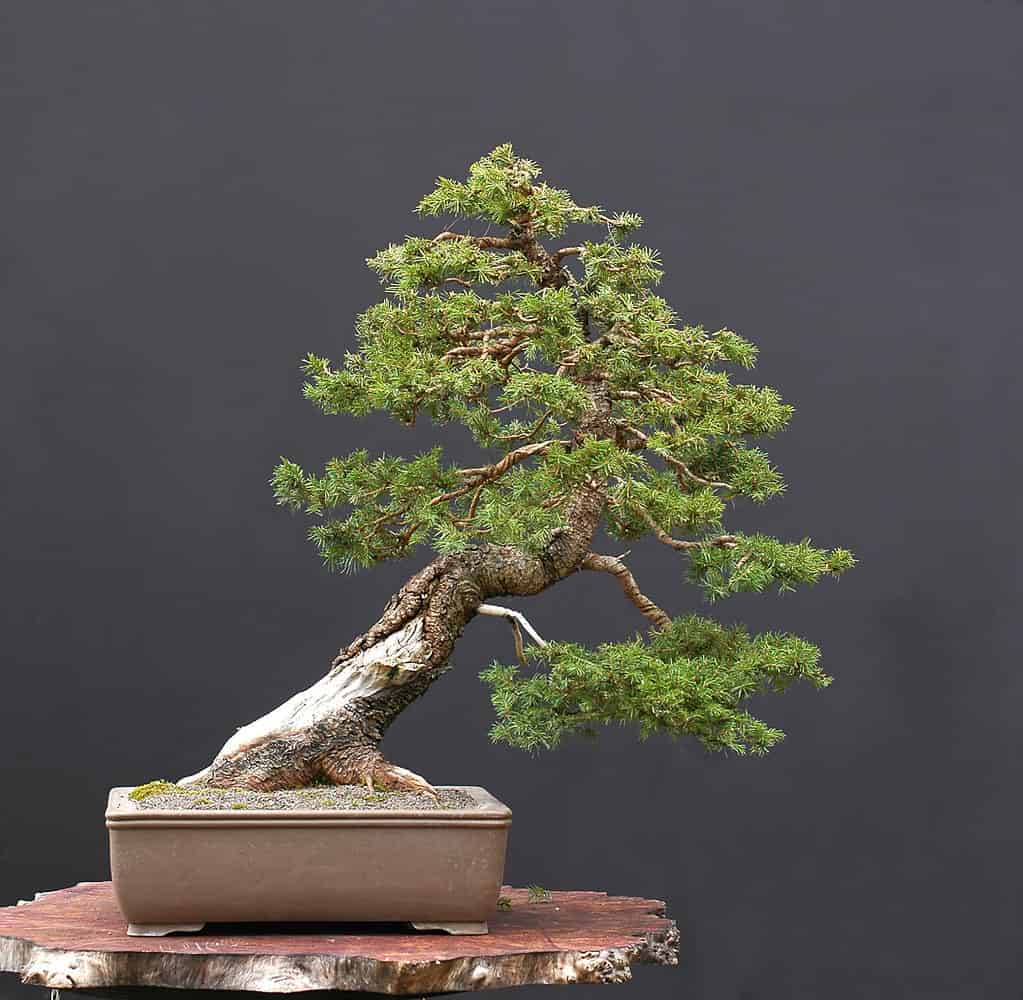
While difficult to train, spruce Bonsai trees are unique and beautiful.
©Walter Pall/Shutterstock.com
| Spruce Bonsai Tree Facts | |
|---|---|
| Botanical Name | Picea |
| Common Types | Picea jezoensis, Picea mariana, Picea pungens, Picea abies, Picea sitchensis |
| Sunlight | Full, bright sunlight during growth seasons (spring/summer); some shade permitted during dormant seasons (fall/winter) |
| Soil | Any organic Bonsai soil mixture, or make your own using akadama, lava rocks, or pumice |
| Water | Consistently moist soil, but make sure your roots aren’t sitting in water |
| For Beginners? | Intermediate; can be difficult to train and wire |
| Indoors or Outdoors? | Outdoors only, with some winter protection |
| Pairs Well With… | Straight, dramatic trunks pair well with rocks, ornaments, or moss, or simply let the foliage speak for itself! |
Common Types of Spruce Bonsai Trees
Just about any type of spruce tree can be fabricated in a pot or miniature landscape. However, some cultivars are better than others, especially ones that are dwarf varieties of larger trees. Given the fact that your spruce Bonsai tree will need to be grown outside, you should consider a tree option that grows well in your local area. Here are some potential options for you to consider!
Norway Spruce
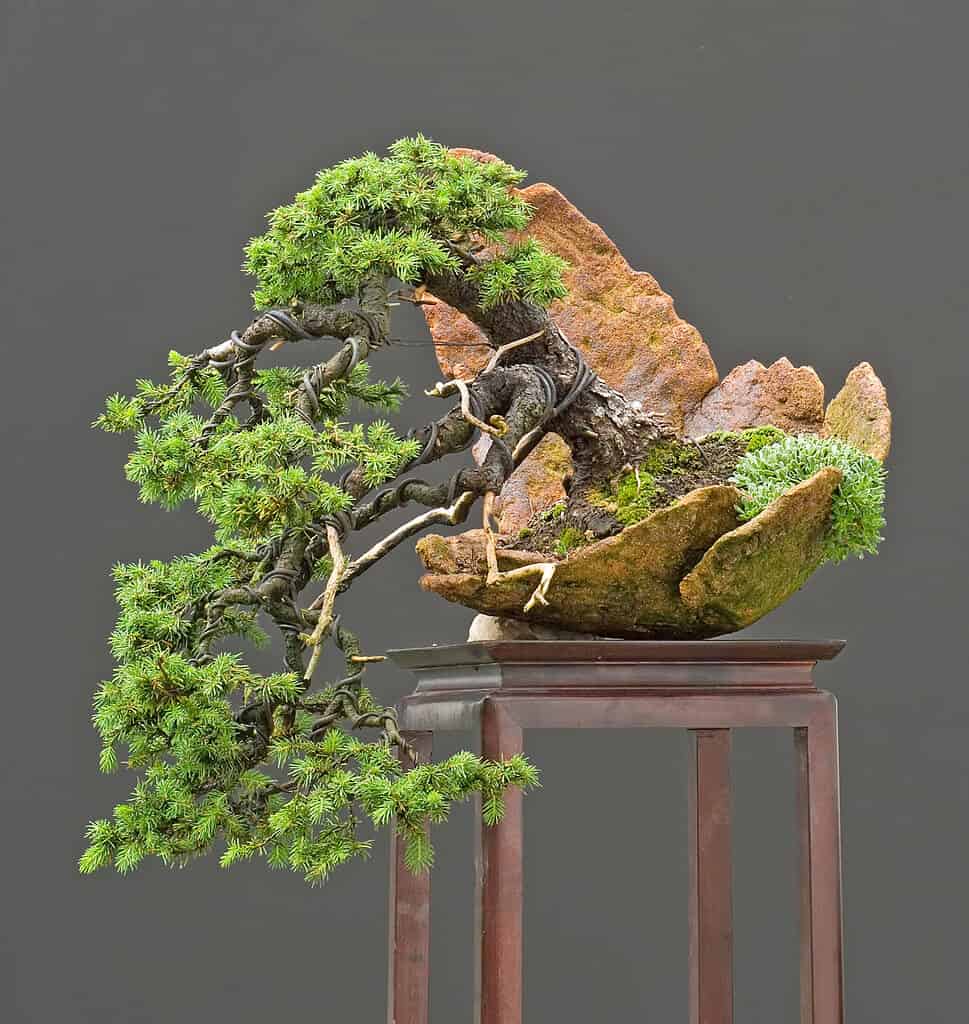
The Norway spruce is one of the most popular spruce Bonsai tree cultivars.
©Walter Pall/Shutterstock.com
Did you know that this popular Christmas tree variety also makes a fantastic Bonsai tree? Native to nearly all parts of Europe, Norway spruce trees are great for Bonsai tree purposes, for a number of reasons. The foliage of the Norway spruce makes it easy to craft foliage pads or floating clouds, and the trunks are an attractive gray shade.
Alberta Spruce

Commonly sold as potted plants, Alberta spruce trees make good Bonsai specimens.
©vrjoyner/Shutterstock.com
With a miniature variety, the bright green foliage of an Alberta spruce tree makes it an attractive Bonsai tree specimen. However, this may not be the easiest species to work with, given its upward-growing branches. Too much styling may kill any type of spruce tree, but an Alberta spruce may be able to handle it if you’re up for the challenge!
Ezo Spruce
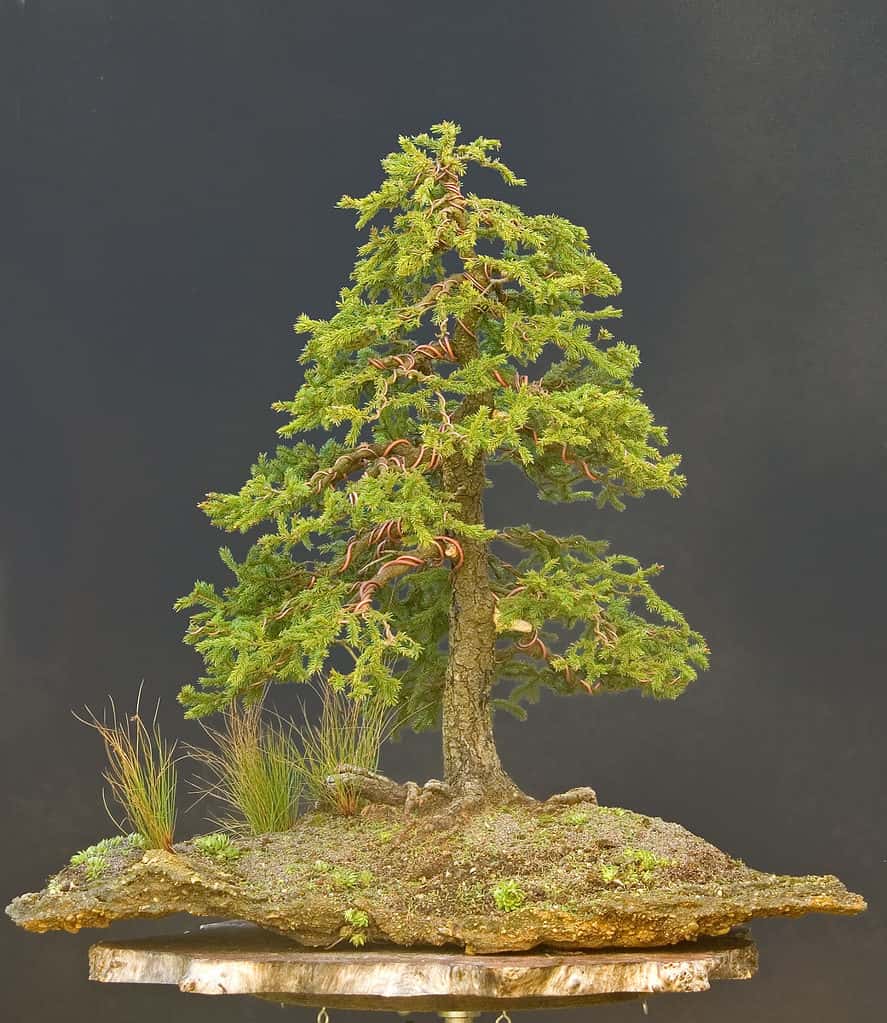
While rare, Ezo spruce Bonsai trees are some of the most beautiful.
©Walter Pall/Shutterstock.com
There are a number of different names for the Ezo spruce, a spruce variety native to Japan. It may be a difficult tree to find in the United States, but diligent searching may reveal a cutting just for you. This spruce produces a dark gray and gnarled bark, perfect for dramatic and traditional Bonsai tree formats.
Colorado Blue Spruce

Native to the United States, the Colorado blue spruce tree makes an excellent Bonsai candidate.
©Mariusz S. Jurgielewicz/Shutterstock.com
With beautiful foliage ranging from an icy green shade to various shades of grayish blue, Colorado blue spruce Bonsai trees are attractive and elegant. They are also native to the United States, making them potentially easier to get a hold of than certain overseas varieties of spruce trees.
Black Spruce
Widespread throughout North America, particularly Canada, black spruce trees are ideal Bonsai tree specimens in colder climates. The bright green foliage contrasts the reddish bark of this tree quite well, despite its relative stubbornness when it comes to training and wiring.
White Spruce

A healthy white spruce Bonsai tree produces light green foliage.
©Raquel Pedrosa/Shutterstock.com
Another North American spruce tree for Bonsai cultivation has to be the white spruce. With gray-white bark and full foliage, this is a great candidate for cold climates. While Bonsai trees need far more protection compared to full-sized trees, white spruce trees can tolerate temperatures below -50 degrees Fahrenheit!
Red Spruce
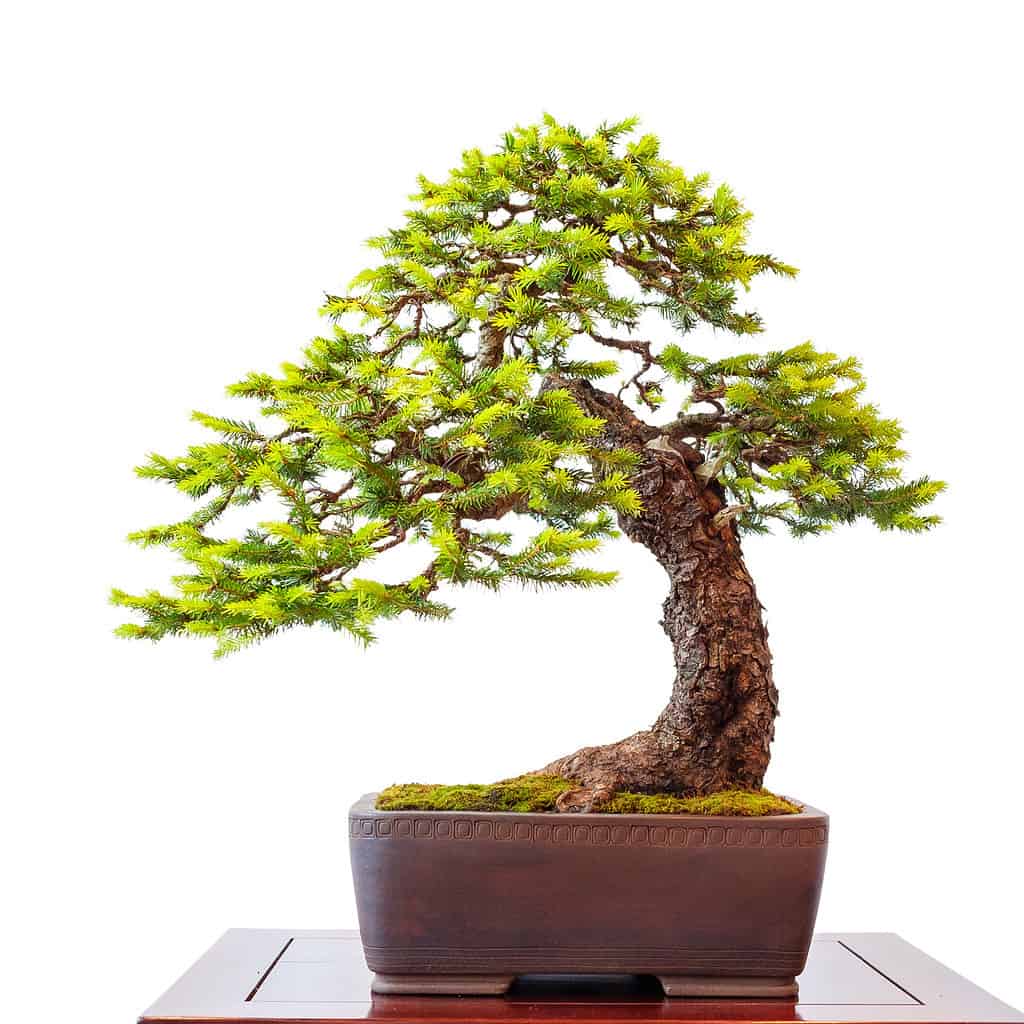
While subtle, red spruce Bonsai trees produce reddish-brown tones.
©Bernd Schmidt/Shutterstock.com
Native to the northeasternmost portion of the United States and Canada, red spruce trees produce reddish brown bark that is more obvious with shaping and cutting. This is another especially cold-hardy variety of spruce trees, and it may even produce tiny cones or seed pods!
Sitka Spruce
While it may feel a little ironic to grow the largest possible spruce tree species in a miniature format, Sitka spruce trees are great for Bonsai tree design. Named after where is commonly found in Alaska, Sitka spruce trees produce attractive gray bark and grow a bit faster than the average spruce.
Caring for Your Spruce Bonsai Tree
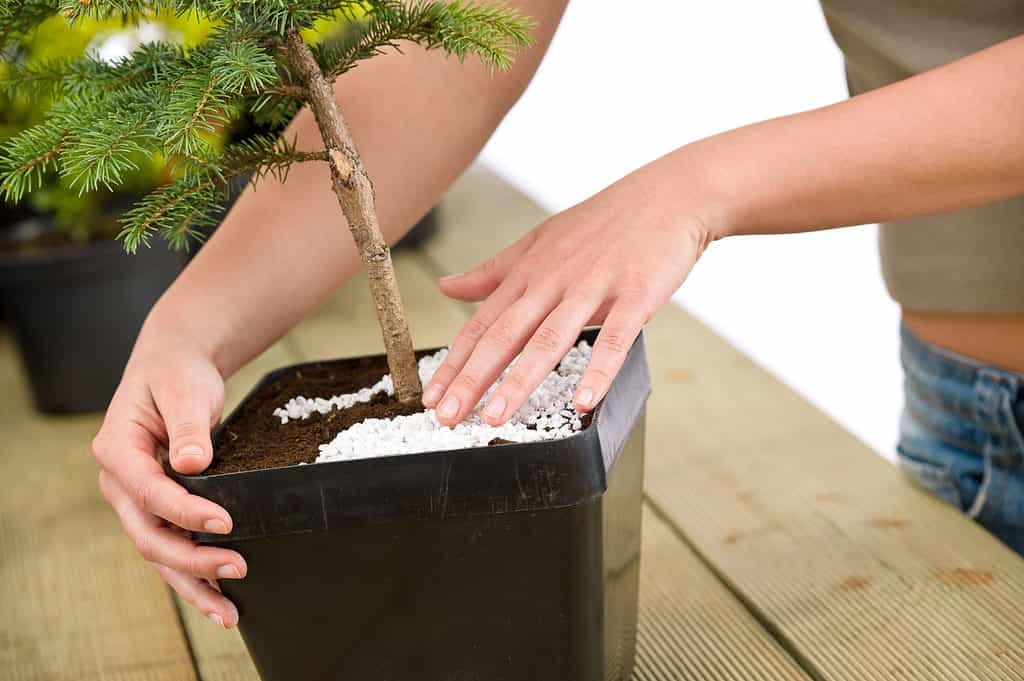
Your spruce Bonsai tree may need fertilizing more than once a year.
©CandyBox Images/Shutterstock.com
It’s important to note that your spruce Bonsai tree will not survive indoors or in a particularly warm climate. However, this doesn’t mean that you shouldn’t provide your spruce with adequate winter protection. Any Bonsai tree that is grown outdoors typically requires a greenhouse or soil covering during wintertime, given that there’s very little to insulate its roots.
But what else does a spruce tree need in order to thrive as a Bonsai tree specimen? Here are some basic care requirements for your spruce Bonsai tree.
Sunlight
Bright, full sunlight is key to helping your spruce Bonsai tree grow and thrive. This is especially true during spring and summer, when the tree is actively growing. During the dormant seasons of fall and winter, your spruce tree may benefit from some shade. However, make sure that your tree remains warm and has some protection during this time of year, no matter where you place it! Some spruce tree varieties will grow much faster than you think in adequate light conditions.
Soil Type
Spruce trees aren’t very fussy about their soil type, but you should still use a Bonsai tree soil mixture when at all possible. You can also make your own using an organic potting mix, akadama, lava rock, and pumice stones. Drainage is key to keeping your spruce Bonsai tree happy, so make sure water can easily leave your Bonsai tree container.
Water
A spruce tree in the wintertime will need significantly less water compared to a spruce tree in the summertime. No matter what, water your spruce Bonsai tree thoroughly and avoid leaving its roots wet or soaking in water. You should let your soil dry out in between waterings, but make sure that your spruce doesn’t remain dry for too long.
Placement
As already discussed, you should place your spruce Bonsai tree outdoors, so long as you live in an adequate climate to support this. Your spruce tree likely won’t appreciate hot temperatures, but some spruce species are more drought-tolerant than others. Make sure that your spruce tree receives at least six hours of direct sunlight each day, depending on the season.
Speaking of seasons, placing your spruce tree in the shade during its dormant months may help protect its roots. However, make sure that your spruce species prefers this. Many will continue growing slowly in the winter, so sunlight is key for this process!
Pruning Your Spruce Bonsai Tree
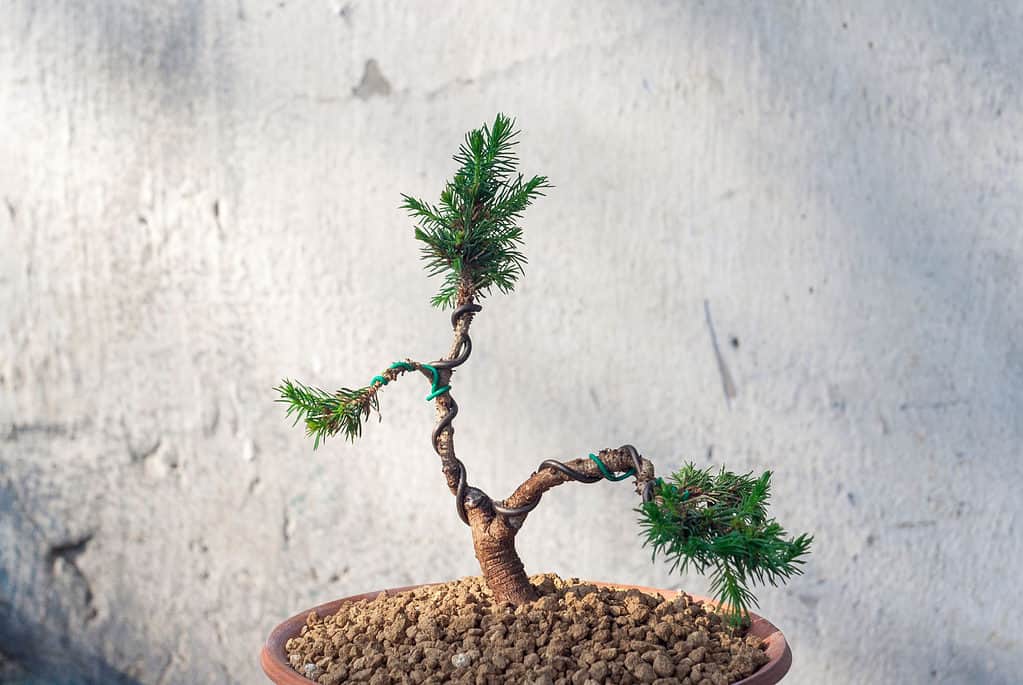
While relatively hardy, spruce Bonsai trees can be tricky to shape.
©pjatnica/Shutterstock.com
One of the main reasons why spruce trees are not recommended for the beginning Bonsai artist is because they do not take well to shaping. This isn’t to say that you can’t prune and shape your spruce Bonsai tree, but its branches are extremely flexible. In their natural habitats, spruce trees often experience heavy snowfall, enough to bend their branches each and every year.
This means the spruce trees are designed to bounce back no matter how they are manipulated, something that certainly works against the average Bonsai tree cultivator! Many keepers of spruce Bonsai trees report that the branches have to be rewired or repositioned time and time again, year after year, as their spruce trees simply return to how they once were.
The whorls and gnarled sections of spruce Bonsai tree trunks are also difficult to work with at times. These whorls produce multiple branches in odd locations, so you may want to pinch new growth off of your Bonsai tree. Keep in mind that your spruce tree will not produce more foliage or new branches if you completely remove all of its needles from a particular section. With care and practice, your spruce tree can produce some amazing designs and features!
Ideal Spruce Bonsai Tree Styles
With enough persistence, you can style your spruce Bonsai tree in just about any way, though the formal or informal upright position may be the simplest method for you to start with. A semi-cascade style may work for your spruce tree if you train it with care, or you may consider incorporating rocks into your Bonsai container design!
Propagating Your Spruce Bonsai Tree
The good news is, it’s easy to propagate a spruce Bonsai tree, either from seed or from cuttings from healthy specimens. You should start your spruce Bonsai tree seeds in the springtime. Taking a cutting less than 5 inches in length may be easier, and these should be taken during summertime and in the beginning of fall before the tree goes dormant. Choosing to propagate from a spruce tree growing in your local area may be your best bet for helping your spruce Bonsai tree thrive!
Common Problems with Spruce Bonsai Trees
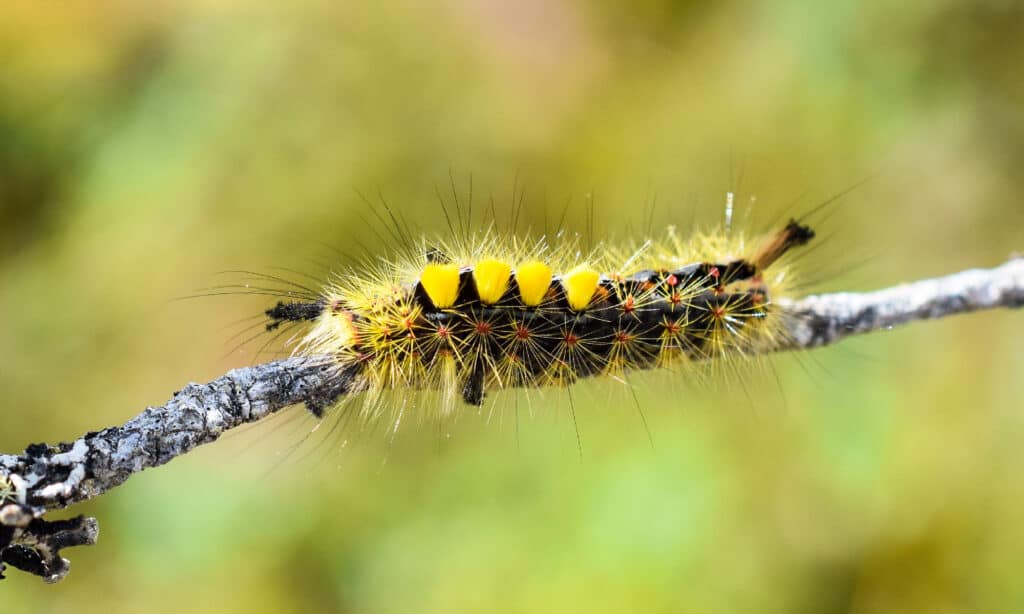
©iStock.com/HHelene
As previously mentioned, one of the biggest issues with cultivating a spruce Bonsai tree is the fact that it has persistent and flexible branches. It’s extremely difficult to train or shape a spruce tree, especially if you have a particular artistic vision in mind. Plus, spruce trees can suffer if they are cut or pruned too heavily, potentially resulting in the death of your specimen.
Spruce trees are also susceptible to a number of pests and diseases. Choosing to propagate from a healthy tree is a good place to start, but you may still run into the following problems:
- Fungal diseases (rust, mold)
- Caterpillars
- Aphids
- Budworms
- Spider mites
Cultivating a spruce Bonsai tree is a task that may be more frustrating than rewarding at times. However, with practice and care, you can help your spruce thrive outdoors in a variety of shapes and sizes! It’s worth a try, especially if you are seeking a pleasant evergreen Bonsai tree.
Thank you for reading! Have some feedback for us? Contact the AZ Animals editorial team.

